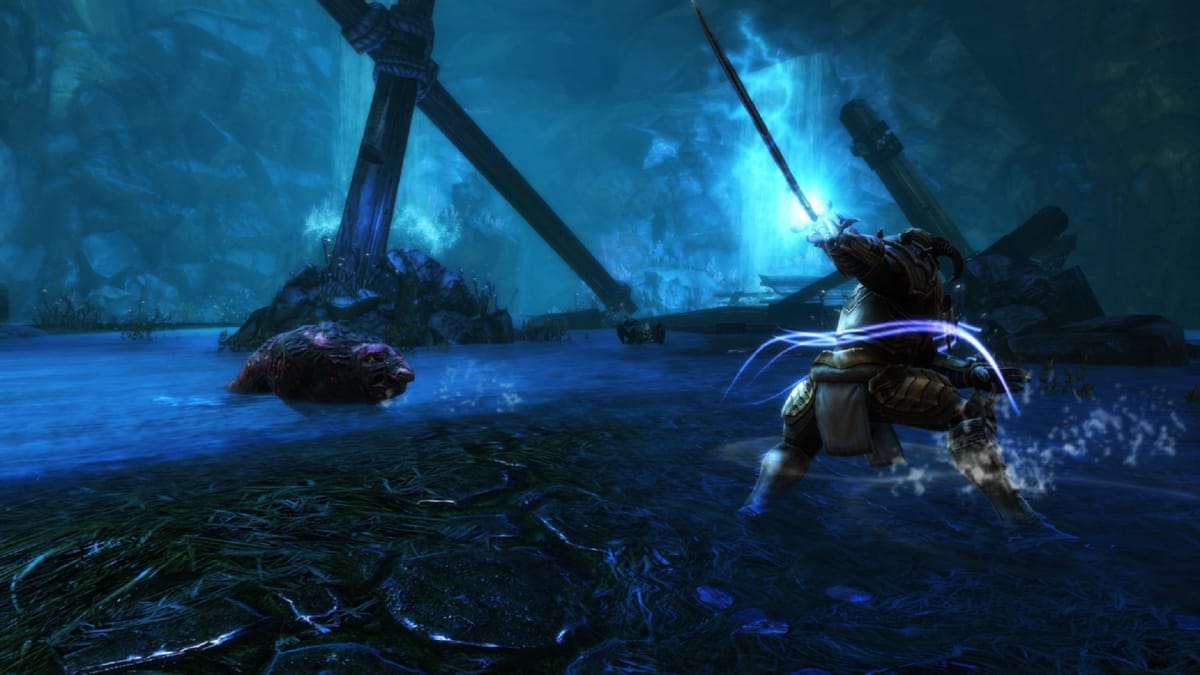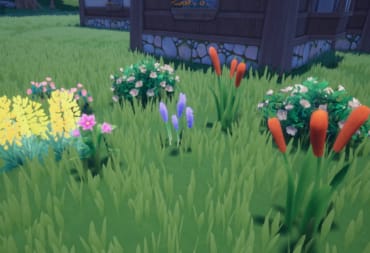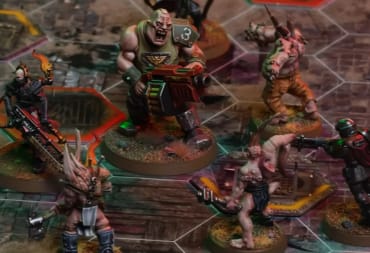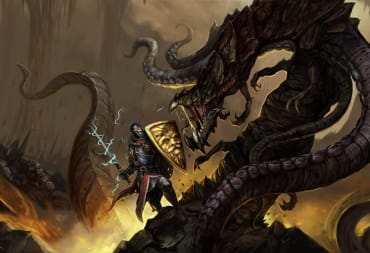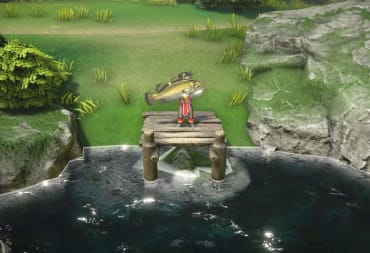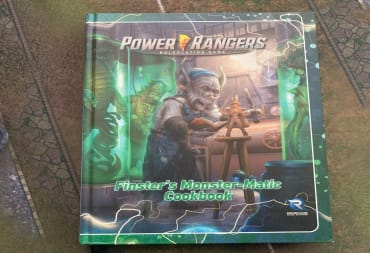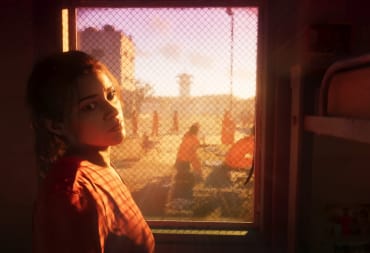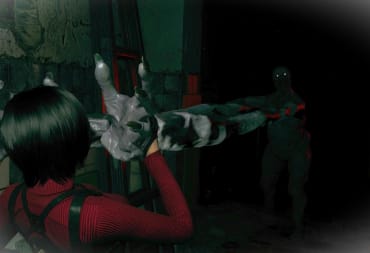With so many games vying for your attention these days, it's easy to find yourself distracted by the most glamorous products that amass the most critical acclaim. There's nothing wrong with that, but there's also something to be said about an average game that just barely skirts by on its strengths, filling a niche that makes a certain audience member happy. Kingdoms of Amalur fit that mold, and its Fatesworn expansion is no different.
Average Games Can Be Perfectly Good Fun
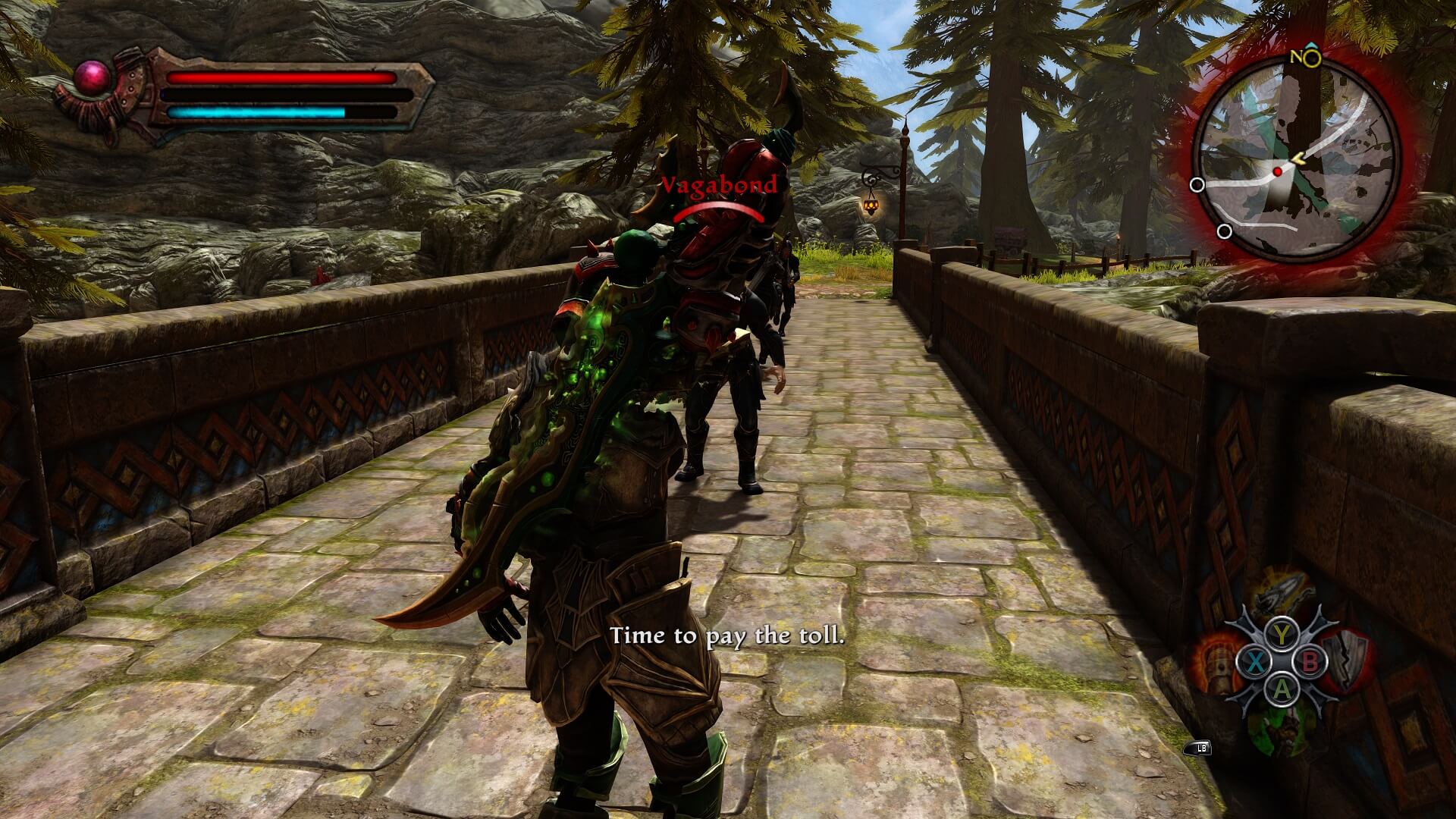
Kingdoms of Amalur epitomizes the middle-of-the-road experience. By that, I mean a title that typically garners an average score of 70 on Metacritic. These are the kinds of games with plenty of merits, but they won't be remembered as exemplary entrants in their respective genre. In the era of aggregate sites, online discourse, and hype culture, modern consumers have this proclivity toward a certain quality threshold. Numbered scores are arbitrary in the grand scheme of things, but they're still useful shorthand for many people, indicating a title's general quality.
With only so much time and money in the world, people are likely to gravitate towards games that review highly or that their peers praise endlessly. In this kind of climate, it's difficult for above average and middle-of-the-road games to make a strong impression. Sometimes, it's worth exploring outside of this upper bounds of critical or consumer consensus. Doing so might lead to you finding a personal favorite, fully recognizing every flaw but not really caring as long as you're having fun.
Tons of worthwhile games across a range of genres release every year, failing to capture larger audiences because they didn't review highly enough. This is disappointing because a 7/10 can be just as engaging as a 9/10 in different ways to specific types of people. Barebones fighting games lacking in single-player content are not likely to score high with mainstream reviewers. If those games have deep combat, though, a fighting game aficionado is going to love them.
It's within this territory that Kingdoms of Amalur finds its niche. You could run through its flaws like a checklist. It's a generic fantasy setting whose only identity comes from its gameplay systems rather than its world or characters. All dungeons use extremely basic tile sets, failing to engender any excitement from the act of exploration. Its open-world map is a mess of interconnected linear paths, sometimes making reaching specific points a chore. Side quests comprise of the most cookie-cutter checklists you'd expect as dailies in an MMO. Nothing about its setting or structure is compelling, but it nails the role-playing elements and action to the point that the right audience might sing its praises for years.
In fact, that's exactly what happened leading up the remaster's announcement. It didn't stop with that remaster. Fan support must have been strong enough to convince the publisher to invest resources in a brand new expansion to a 10-year-old single-player game. This kind of rollout speaks to the impression games like Kingdoms of Amalur can make when given a chance.
Why Play Fatesworn?
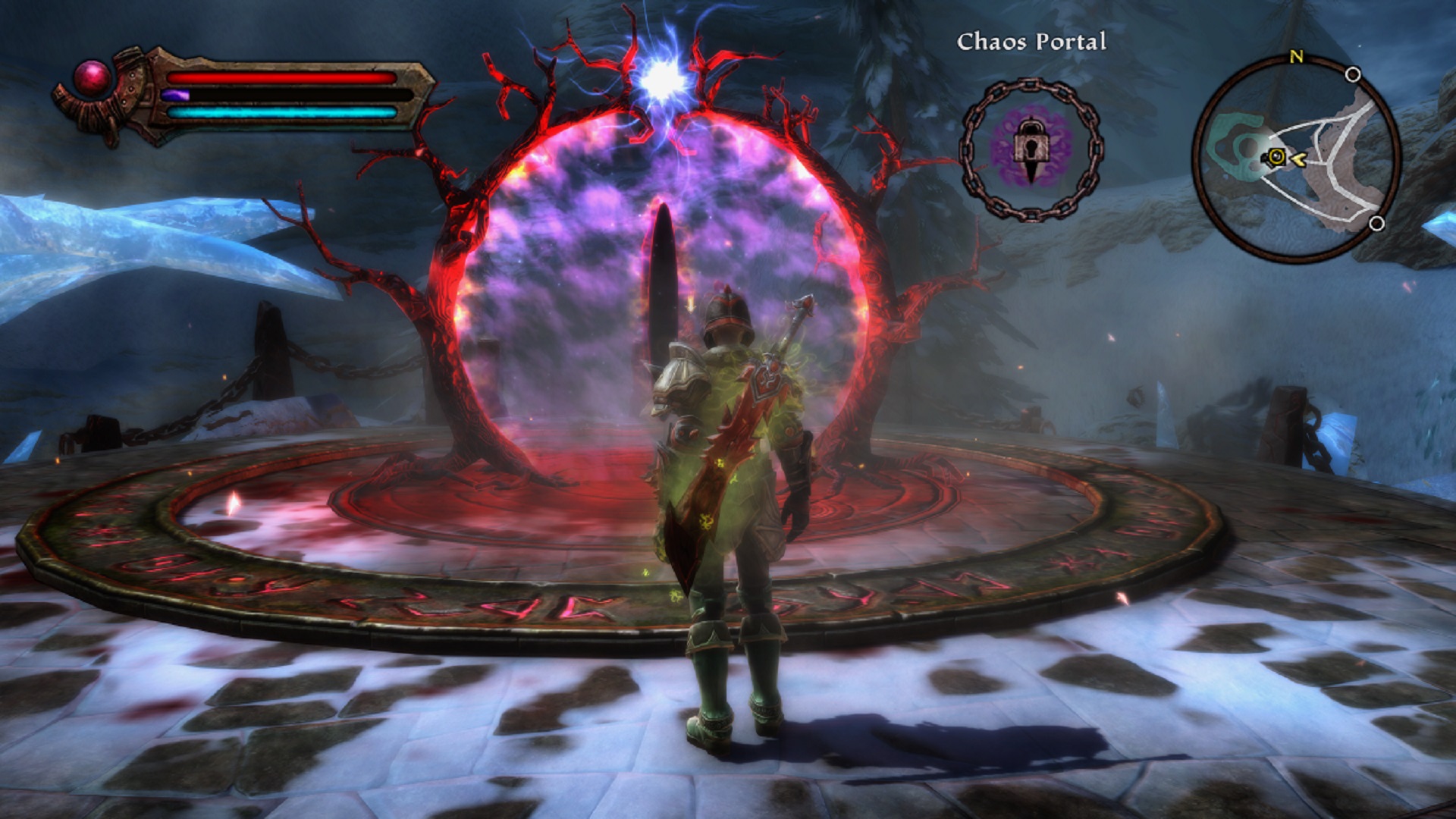
Fatesworn's additions are too numerous to list in their entirety. Beyond the storyline and side quests, there are new armor sets, twist of fate cards, and a new mysterious merchant that sells equipment lottery boxes. Chaos is the most notable of the expansion's introductions, as this mechanic ties in several of Kingdoms of Amalur's existing systems.
Chaos as a mechanic reinforces the game's strengths while doing next to nothing to fix what didn't work. The chaos portals are one of the most striking additions on paper. The concept of an interdimensional dungeon that can only be opened by destroying the chaos rifts attached to it could have added a unique wrinkle to the existing gameplay loop. As it stands, the dungeons housed within those chaos portals fail to move the needle.
Chaos dungeons are aesthetically distinct from the rest of Kingdoms of Amalur's interiors. Functionally, however, the way the developers make use of this new tile set to craft a space isn't any more exciting. For all of the faults with The Elder Scrolls IV: Oblivion's tile set repetition, those Oblivion gates still captured a sense of grandiosity and urgency missing from Amalur's dinky chaos portal dungeons.
This missed opportunity solidifies what the standard Kingdoms of Amalur experience is like. It's a bunch of ideas that sound interesting on paper, but don't stick. These chaos portals are one of the core additions to the expansion, with the story revolving around them. Despite that structural weakness, I still found myself losing hours to Fatesworn. Its core hook leaves a lot to be desired, but at the end of the day, it's still the Kingdoms of Amalur that I and many fans have grown accustomed to.
Kingdoms of Amalur built its name on malleability. Character progression and customization offer a gratifying sense of ownership, with experimentation being encouraged. Some other additions such as chaos weapons and chaos portals add some interesting wrinkles. New chaos enemy variants are introduced, protected by a special shielding that can only be damaged with chaos weapons. This also ties into the concept of chaos rifts, which are time-sensitive obstacles in which the player must kill everything faster than the chaos rift can spit them out.
Crucially, this very specific mechanic finds a proper balance between the personalization and min/maxing that make Kingdoms of Amalur enduring. You won't have to completely rethink your build and feel like you've wasted hours of your life on the wrong progression. Even if that were the case, you're able to reset all skill points at any Fateweaver found throughout the Faelands. Rather, you're given the leeway to continue playing as usual after making the next overpowered piece of equipment to overcome the expansion's new systems. It's this reward that comes from engaging with its role-playing systems that makes it so comforting. After putting in the legwork, you're able to zone out.
This flow state gets at the heart of Kingdoms of Amalur and what makes Fatesworn a successful expansion in context. The story and characters are as uninteresting as ever. Side quests haven't grown past mind-numbing checklists. The new section of the Faelands is still incomprehensibly slapped together by linear paths between major areas. On paper, it sounds like a mess. In execution, however, it makes the right synapses fire off. Whether you're experimenting with its free-flowing combat or getting lost in the crafting or alchemy systems, it's easy to ignore everything it does wrong. By most accounts, Kingdoms of Amalur is the poster-child for average video games. Its pieces don't form a magnificent whole, but some of those pieces are so satisfying that it doesn't matter.
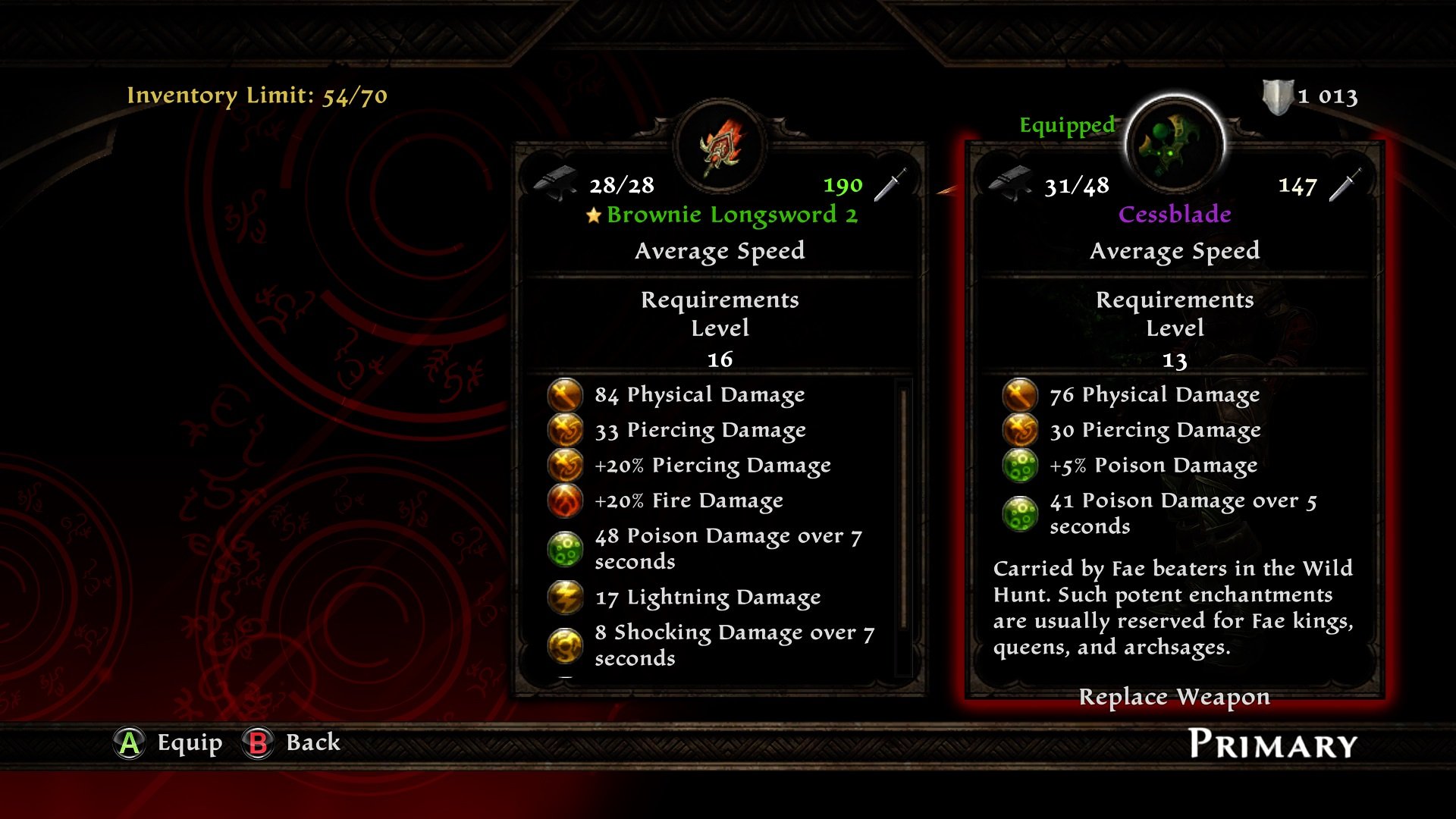
Fatesworn Adds More of the Same
Kingdoms of Amalur: Re-Reckoning Fatesworn may be far from the most mindblowing DLC the industry has seen, but that's OK. Fatesworn wasn't made to convert non-fans. It exists to give fans more of what made Kingdoms of Amalur so enduring. It has decent combat with plenty of variety afforded through its weapon types and malleable progression. Combining that solid combat with equally solid customization made Kingdoms of Amalur stick. It's not the kind of game I'd recommend to a lot of people, but it's still a solid title to lose dozens of hours to. Would it have been nice if Kingdoms of Amalur addressed all of its faults? Sure, but it doesn't need that to be fun.
Have a tip, or want to point out something we missed? Leave a Comment or e-mail us at tips@techraptor.net
